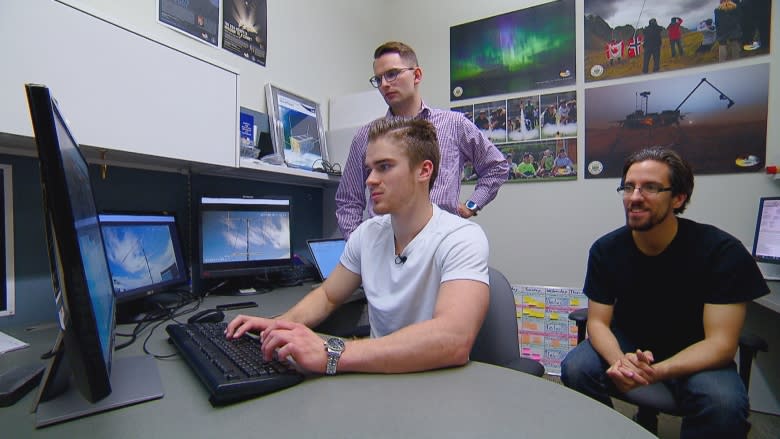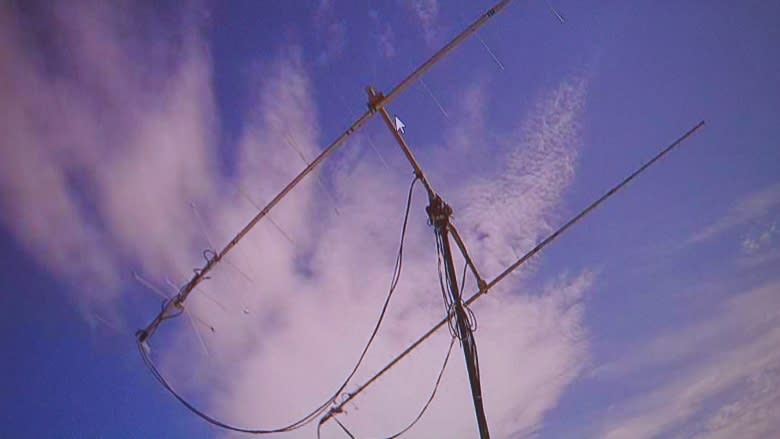U of A students to make contact with Alberta's first satellite
First, there will be an audible hiss and murmur of static, like an untuned radio signal. Then silence.
Finally, a beep will sound at around 11 p.m. Friday.
That will be the signal from space, communicating with an Edmonton ground station operated by the University of Alberta students who built Alberta's first satellite, the Ex-Alta 1.
The satellite was deployed from the International Space Station in the early morning of May 26.
"Right afterwards we were able to go and see outside," said Charles Nokes, manager of the satellite project.
"The International Space Station flew over Edmonton and the sun was reflecting off of the solar panels and we were able to see it like a little star just flying across the sky and we knew our little satellite was right next to it."
It has been quite a journey for the bread box-sized satellite.
Students at the University of Alberta have been working on the AlbertaSat project since 2010. The satellite launched from NASA's Cape Canaveral Air Force Station in mid-April.
Many who got involved weren't even sure they could pull it off.
"I said, 'There is no way. Students can't do that — it's impossible,' " satellite operator and student Tyler Hrynyk said.
"After I saw the caliber of people that I got to work with — undergraduate students were just so dialled in and tenacious in reaching their goals — it wasn't long before I completely 100 per cent bought in and realized that these guys are going to do it and I want to be a part of it."
Students from different disciplines at the university have dedicated years of work to the project.
They built components using open source materials and technology, with a limited budget.
One of the goals of the project participants is to help others get involved in space exploration by sharing what they have learned.
Ex-Alta 1 will be involved with space weather studies in the lower thermosphere.
"Now the journey has really started and now the real work begins," said Hrynyk. "This is really where the mission really starts."



